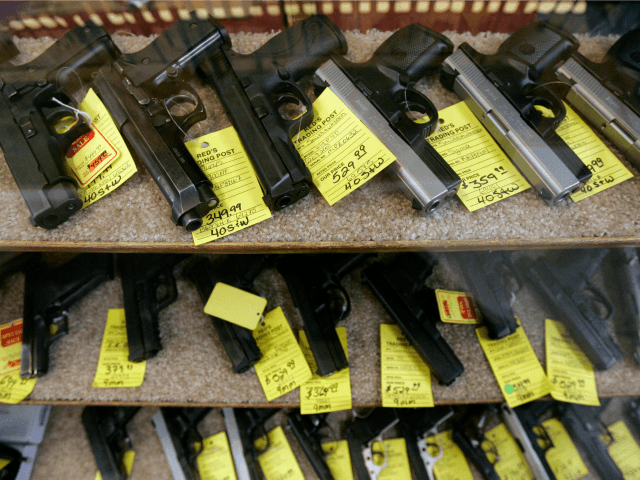Economists from Kentucky’s Transylvania University argue that decreased gun production is responsible for the drop in homicides among black men experienced during America’s boom in private gun ownership.
The economists, Geoffrey Williams and his colleague W. Alan Bartley, claim a rise in homicides among black men was the result of an influx of cheap handguns and that crime descreased as the production of such weapons tapered off.
Their claims were originally published in the Trace, a gun-control journalism outlet, and have now been republished in the Daily Beast.
Williams and Bartley suggest:
It was a “supply shock” of low-priced pistols which in the 1980s and early ‘90s led to higher levels of gun homicide among young black men. During those years, ATF oversight of the gun industry slacked off and a group of Los Angeles-based manufacturers known as the “Ring of Fire” expanded the market for “Saturday Night Specials”: bottom-of-the-barrel firearms that turned up at crime scenes as surely as weekends beget drunken disputes.
They explain that the production of cheaper firearms, which they labeled “Saturday Night Specials,” sharply decreased between 1994 and 2000. The “gun homicide rate among young black men also fell” during this time frame, leading Williams and Bartley to suggest what the Daily Beast describes as correlations “between gun production and gun possession and skyrocketing homicide rates.”
The problem these claims is that gun ownership not only increased, but increased dramatically during the years in which Williams and Bartley point to decreased production of certain types of firearms and/or decreased possession.
On December 4, 2013, Breitbart News reported a Congressional Research Study which showed that gun ownership in America climbed from 192 million firearms in 1994 to 310 million firearms in 2009. And the authors of the the report noted that whereas the “firearm-related murder and non-negligent homicide” rate was 6.6 per 100,000 Americans in 1993, it fell to 3.6 per 100,000 in 2000. (That is the same time frame in Williams and Bartley claim a decrease in the production contributed lower crime.)
Additionally, it should be noted that the price of a gun at retail is important to the law-abiding citizen, because that is the price he has to pay in order to have weapon for home defense and/or self-defense. But the price of a gun at retail does not matter to a gang member or a criminal on Chicago’s South Side, because he will acquire his firearm via a black market in which the law-abiding citizen will never engage. In that market, prices are set based on risk involved involved in stealing the weapon, the risks intrinsic to selling the gun illegally, and other risks and calculations that the law-abiding citizen never has to consider or make.
Because of this, the price a law-abiding citizen may pay for a particular handgun at Cabela’s may be far above–or far below–what a criminal on Baltimore’s streets will pay for the same gun after it is stolen.
AWR Hawkins is an award-winning Second Amendment columnist for Breitbart News, the host of the Breitbart podcast Bullets with AWR Hawkins, and the writer/curator of Down Range with AWR Hawkins, a weekly newsletter focused on all things Second Amendment, also for Breitbart News. He is the political analyst for Armed American Radio. Follow him on Twitter: @AWRHawkins. Reach him directly at awrhawkins@breitbart.com. Sign up to get Down Range at breitbart.com/downrange.

COMMENTS
Please let us know if you're having issues with commenting.